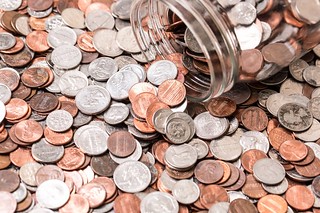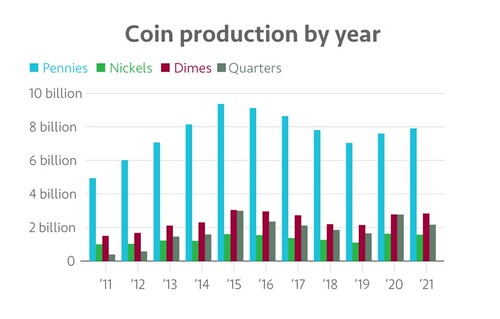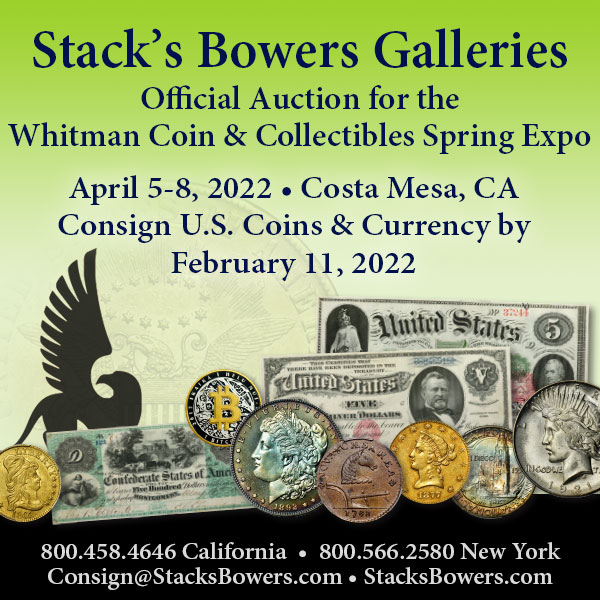
PREV ARTICLE
NEXT ARTICLE
FULL ISSUE
PREV FULL ISSUE
V25 2022 INDEX E-SYLUM ARCHIVE HOW THE MINT DECIDES HOW MANY COINS TO MAKEOn a related note, public radio's Marketplace took a look at how the Mint decides how many coins to produce each year. Here's an excerpt - see the complete article online. -Editor
I've noticed that the mint numbers for coins can vary a lot from year to year. How does the United States Mint determine how many coins of each denomination to produce in a year? In 2021, nearly 15 billion pennies, quarters, nickels, dimes and half dollars departed the U.S. Mint's facilities to be spent by the public. Like Bailey pointed out, it's a figure that can fluctuate annually. In 2019, roughly 12 billion of these coins were produced. To determine how many coins the mint should produce, the Federal Reserve devises a 12-month rolling forecast, according to the U.S. Mint's website. The Federal Reserve also gives the mint monthly coin orders. The U.S. Mint uses this forecast to determine how much of each denomination it'll produce, then it makes the coins and transports them to the Federal Reserve banks and private-sector coin terminals. The Fed banks then deliver the coins to depository institutions, which exchanges them with their customers. And that is how the circulation cycle begins. Behavioral patterns, long-term demand, holidays, unforeseen events like natural disasters and a pandemic can all play a role in how many coins are manufactured. Daniel Soques, an assistant professor of economics at the University of North Carolina Wilmington, said natural disasters increase the demand for cash and coins because disasters often disrupt electronic payment systems. Soques noted that before 2009, each of the 12 Federal Reserve banks determined the need for coins on an independent basis and submitted those orders to the U.S. Mint.
Assessing how many coins to produce is a lot different than figuring out the production of, say, crockpots, Soques explained.
The Fed's Cash Product Office assesses the inventory at the Fed's roughly 200 coin vaults throughout the U.S. on a daily basis, he added.
Todd Martin, deputy chief of corporate communications at the U.S. Mint, said in an email that
To read the complete article, see:
Wayne Homren, Editor The Numismatic Bibliomania Society is a non-profit organization promoting numismatic literature. See our web site at coinbooks.org. To submit items for publication in The E-Sylum, write to the Editor at this address: whomren@gmail.com To subscribe go to: https://my.binhost.com/lists/listinfo/esylum All Rights Reserved. NBS Home Page Contact the NBS webmaster 
|


